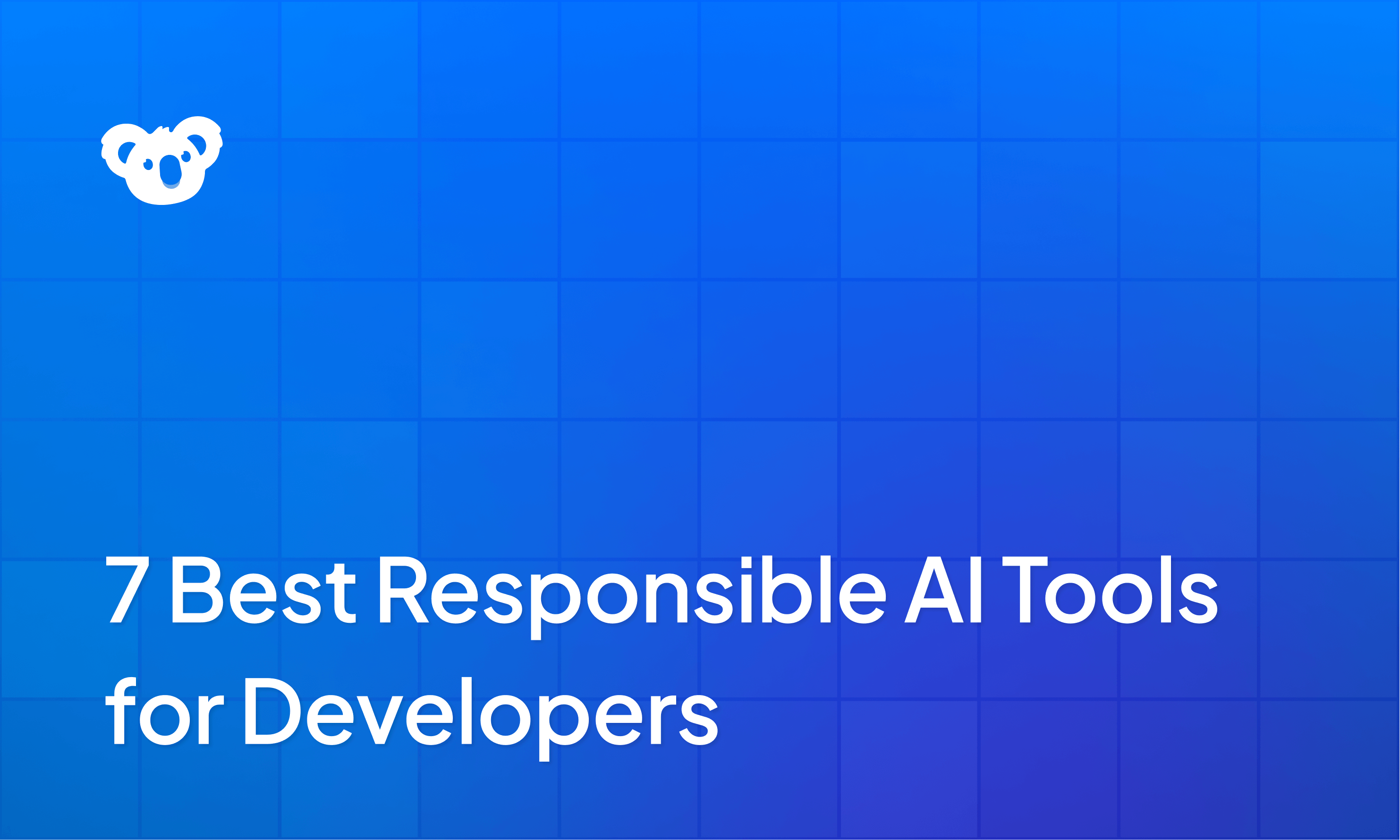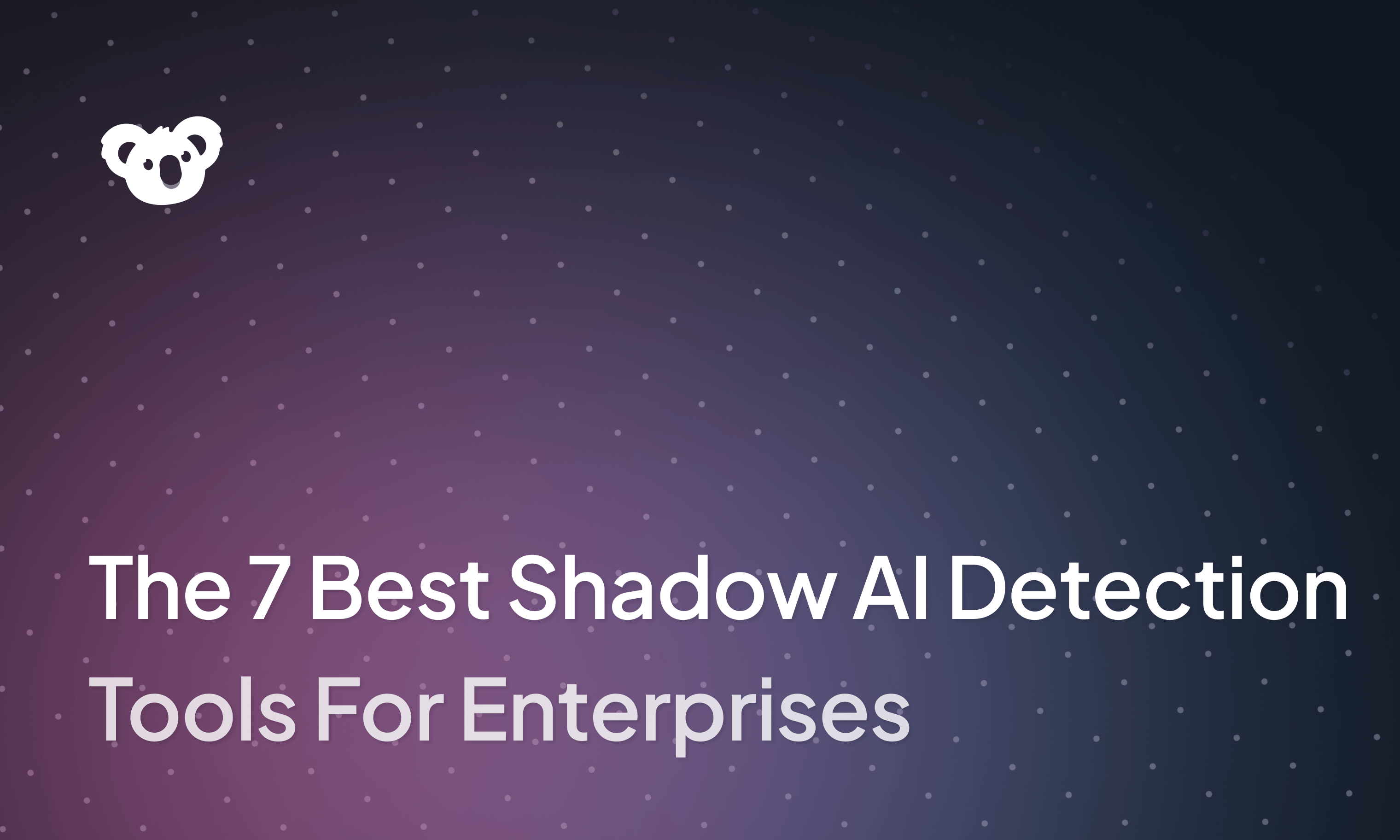


Shadow IT and shadow AI are two of the biggest blind spots in enterprise security. Shadow IT is the unapproved SaaS apps that employees use. Shadow AI is a newer form of the same problem that specifically involves teams using AI tools, models, and APIs without governance.
Their risks, causes, and impacts don’t always overlap. The way you manage them shouldn’t either. Let’s break down the differences and how you can safeguard your company.
In this article, we'll cover:
- What shadow IT and shadow AI mean
- Their key differences
- Strategies to prevent shadow AI and shadow IT sprawl
What is shadow IT?
Shadow IT is the use of technology, software, and services without formal approval or oversight from the IT department.
Keep in mind that shadow IT doesn’t start from bad intentions. Teams adopt unauthorized tools because they need to move faster than IT can provision solutions, or because approved options don't meet their specific requirements.
Examples of shadow IT
Common examples of shadow IT include:
- Finance teams using specialized reporting tools because the enterprise BI platform takes weeks to configure.
- Customer support using unapproved chat widgets because the official help desk system lacks key features.
- Sales teams implementing their own file-sharing services to avoid the approval delays of official channels.
Key risks of shadow IT
When IT doesn't know what tools employees are using, they can't secure them or audit them.
This leads to:
- Data insecurity and exposure: Employees upload sensitive information to unapproved cloud services without understanding where that data lives, who can access it, or how it's protected. This data may end up in tools that lack proper access controls.
- Integration chaos and technical debt: Each unauthorized tool adds another point of failure. Teams build workflows that depend on these tools. When something breaks, fixing it becomes a crisis because no one documented the dependencies or built proper error handling.
- Operational fragility and key person risk: When employees set up tools individually, they become sole administrators with exclusive knowledge. If they leave or move roles, critical knowledge disappears. Official IT can't provide support because they lack access or documentation.
What is shadow AI?
Shadow AI refers to the AI tools, APIs, or models employees use without IT approval, oversight, or governance.
The phenomenon gained explosive attention in late 2022 with the public launch of ChatGPT, though enterprises had been using unapproved AI tools for years, starting with the early AI APIs and models. Employees didn't wait for IT sign-off. They just started using it. The barrier to entry for most of these tools is essentially zero. Most offer free tiers that provide immediate value.
That wave of adoption carved out a distinct category within shadow IT. Traditional unauthorized tools might only handle company data, but shadow AI learns from it. Employees can even use AI to build their own custom tools that bypass IT entirely.
Examples of shadow AI
Common examples of shadow AI include:
- Generative AI platforms like ChatGPT, Claude, and Gemini for writing, analysis, research, and problem-solving.
- AI-powered productivity tools such as grammar checkers, meeting transcribers, and presentation builders that operate in the background.
- Specialized AI services for image generation, data analysis, or code completion.
- Browser extensions and plugins that add AI capabilities to existing workflows, often without users realizing they're adopting new AI systems.
Key risks of shadow AI
Shadow AI amplifies every risk associated with shadow IT while introducing entirely new categories of exposure.
The critical risks include:
- Uncontrolled data exposure and training contamination: When employees paste confidential information into AI tools, they often don't realize that data may be used to train the model. Customer contracts, proprietary code, financial projections, and trade secrets can end up influencing outputs shown to other users, including competitors.
- Compliance and regulatory blindspots: AI tools process data across jurisdictions in ways that may violate data residency requirements. They also lack audit trails showing how decisions were made or what data influenced outputs.
- Accuracy and hallucination risks: AI tools generate plausible-sounding content that may be completely wrong. When employees rely on these outputs without verification, errors propagate into customer communications, reports, and strategic decisions. Shadow AI compounds this risk because you’re not aware that AI was involved.
- API and integration risks: Many tools integrate with other systems through APIs, creating data flows that IT can't see or control. Each integration multiplies exposure. An AI tool connected to Salesforce, Slack, and Google Drive can now correlate and extract patterns across all three systems.
Shadow IT vs shadow AI: Key differences
Shadow AI isn't simply "shadow IT with AI tools." While both involve unauthorized technology adoption, shadow AI introduces different risks that require different governance approaches.
Here’s how they compare:
Why both shadow IT and shadow AI are risky for enterprises
Shadow IT and shadow AI are risky because they create blind spots that IT can’t secure, audit, or plan around. When employees use unapproved apps, sensitive data flows through systems nobody tracks, and teams end up working in silos that block integration later.
Strategic projects like cloud migrations, security upgrades, or vendor consolidation fail because leadership is operating with an incomplete map of what actually runs the business.
Shadow AI makes all of this worse. Employees adopt AI tools faster because most are browser-based or integrate as simple add-ons.
But the risks are higher:
- Data leakage is permanent: Many consumer AI tools train on user inputs, meaning your sensitive data could inform someone else's results.
- Audit trails don't exist: Most consumer AI tools don't log what data went in or what outputs came out. This makes it impossible to investigate breaches or demonstrate compliance.
- Accuracy varies wildly: Without AI governance, different teams get different answers to the same question. This creates conflicting decisions across the business.
The bottom line is that both shadow AI and shadow IT erode your ability to manage risk.
How to prevent shadow IT and shadow AI sprawl
Whether it's SaaS or AI, prevention comes down to building the right balance between speed and oversight. Start with foundational controls that work across both categories, then layer in AI-specific guardrails.
Controls for unauthorized tools
Start by tackling visibility, governance, and awareness. These controls are the foundation for managing both traditional shadow IT and shadow AI:
- SaaS discovery and CASBs: Deploy cloud access security brokers (CASBs) like Netskope or Zscaler to identify unapproved apps accessing corporate data. These tools monitor network traffic and flag shadow SaaS usage in real time.
- Vendor management: Centralize procurement through IT and security review processes. Evaluate vendors for SOC 2 compliance, data residency requirements, and third-party risk before contracts are signed.
- Policy and education: Publish clear guidelines on approved tools and run regular training on data handling and security risks. Make it easy for employees to request new tools through a defined process.
- Provide better alternatives: Use platforms that balance flexibility with governance so teams don't need workarounds. For example, Superblocks let teams build internal tools quickly while IT maintains centralized governance over data access, permissions, and security policies.
AI-specific controls
Since shadow AI introduces different risks, you need additional guardrails. They include:
- AI usage monitoring: Use DNS filtering and endpoint detection tools to identify traffic to ChatGPT, Claude, Gemini, and other consumer AI services.
- Data loss prevention (DLP) rules: Configure DLP policies to block or alert when employees attempt to paste sensitive data like customer records, source code, or financial information into browser-based AI tools.
- Approved AI toolkits: Provide enterprise AI platforms with built-in security controls. Options like Microsoft Copilot for Microsoft 365, Google Gemini for Workspace, or custom LLM deployments give employees AI capabilities without data leakage risks.
- Prompt governance: Define what data employees can enter into AI tools. For example, allow anonymized data for testing but prohibit customer PII, proprietary algorithms, or confidential strategy documents.
- Audit logging for AI: Deploy enterprise AI solutions that log every prompt and response. This creates an audit trail for compliance reviews and lets security teams investigate incidents when sensitive data is exposed.
Is shadow AI the new shadow IT?
No. Shadow AI isn't the new shadow IT, but it's an evolution of it with distinct and higher risks.
Traditional shadow IT created data silos and compliance gaps. Shadow AI does the same, but the tools actively learn from your data and generate new content based on it. A forgotten Trello board might contain sensitive project plans, but it won't use those plans to train a model that could leak insights to your competitors. An unsanctioned ChatGPT account can.
This makes shadow AI riskier and harder to contain.
To stay ahead, enterprises can't treat shadow AI as a one-time cleanup project. The tooling landscape changes too fast.
What works is continuous governance built on three principles:
- Provide better alternatives than workarounds that give employees AI functionality within governed environments.
- Build data policies that work regardless of which AI tool employees use. Classify data by sensitivity, define what can't be shared externally, and use DLP controls to enforce boundaries.
- Create fast-track approval for new AI tools, establish sandbox environments for experimentation, and maintain channels where employees can request capabilities.
Use Superblocks to manage shadow IT/AI
Superblocks provides centralized governance and control that addresses the root causes of shadow IT. Instead of teams spinning up disparate tools and apps across the organization, Superblocks gives them a single, approved platform to build what they need.
The key capabilities that enable this are:
- Flexible development modalities: Teams can use Clark to generate apps from natural language prompts, then refine them in the WYSIWYG drag-and-drop visual editor or in code. Changes you make in code and the visual editor stay in sync.
- Context-aware AI app generation: Every app built with Clark automatically abides by organizational standards for data security, permissions, and compliance. This addresses the major LLM risks of ungoverned shadow AI apps.
- Centrally managed governance layer: It supports granular access controls with RBAC, SSO, and audit logs, all centrally governed from a single pane of glass across all users. It also integrates with secret managers for safe credentials management.
- Keep data on prem: It has an on-prem agent you can deploy within your VPC to keep sensitive data in-network.
- Extensive integrations: It can integrate with any API or databases. These integrations include your SDLC processes, like Git workflows and CI/CD pipelines.
- Forward-deployed engineering support: Superblocks offers a dedicated team of engineers who’ll guide you through implementation. This speeds up time to first value and reduces workload for your internal platform team.
If you’d like to see how Superblocks can centralize your internal development, book a demo with one of our product experts.
Frequently asked questions
What is the main difference between shadow IT and shadow AI?
The main difference is that shadow IT involves unapproved tools and platforms, while shadow AI involves unapproved use of AI models, tools, APIs, and features.
How can companies detect shadow AI usage?
Companies can detect shadow AI usage by monitoring network traffic, API calls, and embedded AI features inside sanctioned apps.
What industries are most affected by Shadow IT and AI?
The industries most affected by Shadow IT and AI are highly regulated sectors such as finance, healthcare, and government because they rely on strict data handling rules. Hidden SaaS tools or unmonitored AI adoption can directly trigger compliance violations.
Can governance tools prevent shadow AI risks?
Governance tools can prevent shadow AI risks if they enforce logging, role-based access, and data classification rules. However, you must pair them with employee education and clear policies to ensure sanctioned AI platforms are actually used.
How does shadow IT impact compliance audits?
Shadow IT creates blind spots during compliance audits because IT teams can't demonstrate control over tools they don't know exist. Auditors can only assess what they see, so hidden tools lead to incomplete reports and increase the risk of regulatory penalties.
How can enterprises safely encourage AI adoption without shadow AI?
Enterprises can safely encourage AI adoption without Shadow AI by providing sanctioned AI platforms that include audit trails, access controls, and compliance features.
Stay tuned for updates
Get the latest Superblocks news and internal tooling market insights.
You've successfully signed up
Request early access
Step 1 of 2
Request early access
Step 2 of 2
You’ve been added to the waitlist!
Book a demo to skip the waitlist
Thank you for your interest!
A member of our team will be in touch soon to schedule a demo.
Table of Contents



.png)


